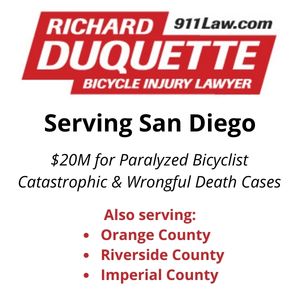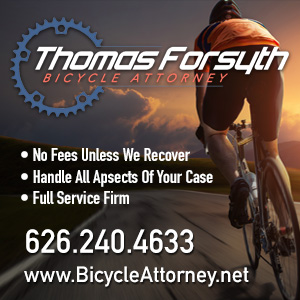I see it just about every time I ride down by the beach.
A few cyclists will be riding bare-headed along the bike path, with their helmets slung casually under their handlebars or clipped onto a rack.
Of course, if you’re not planning to wear your helmet, it’s easier to just leave it at home. So I can only assume that they ride to the beach wearing their helmets, then take them off once they get there, where they feel safe. In fact, I’ve watched riders do exactly that.
The problem is, they have it backward.
Don’t get me wrong. I’m a huge believer in wearing a helmet. And I’m firmly convinced — as were the neurologist and trauma team that treated me — that I might not be writing this now if I hadn’t been wearing one during the infamous beachfront bee encounter. Which, by the way, occurred on the very same bikeway these other cyclists seem to feel so confident in riding sans helmet.
The problem is, bike helmets are most effective in slow speed accidents — the kind that are more likely to occur on an off-road pathway, as opposed to surface streets where both bikes and cars tend to move at much higher speeds.
In fact, bike helmets are designed to provide full protection from brain injuries at speeds up to just 12.5 mph, while reducing the severity of such injuries at speeds up to 20 mph. If you get hit by a car, there’s a good chance it will be going a lot faster than that.
Just to be clear, the standards reflect the speed at which your head strikes the pavement, not the speed you’re riding or the speed of the vehicle in the event of a collision. But until someone overturns the laws of physics, speed of movement will continue to have a strong correlation to speed of impact — the faster you’re going or the greater the force of a collision, the greater the force with which you’ll strike the pavement.
Helmet advocates frequently cite a landmark study showing that helmets reduce the risk of head injury up to 89% (and let’s note that helmets only protect your head from injury; they do absolutely nothing to protect other body parts, nor do they do anything to prevent collisions).
However, a re-evaluation of that study showed a 69% reduction in head injuries and a 74% reduction in severe brain injury. Other studies have shown significantly lower results.
There has also been one study showing that helmets can actually increase the risk of a collision, because drivers may give a wider berth to cyclists wearing helmets than riders without. This has lead some cyclists to believe that they are actually safer riding without a helmet than with one.
Of course, the problem with that — even if it is correct — is that the overwhelming majority of bicycle accidents don’t involve other vehicles. You are far more likely to be injured by losing control of your bike, for whatever reason, than you are by being hit by a motor vehicle.
None of this is to suggest that you shouldn’t wear a helmet; rather, my point is that if you’re going to wear one — and yes, as long as you’re an adult, the decision is up to you — you should always wear it, even in situations where you feel safe and think it’s not necessary.
I am, thank God, living proof to that.
But don’t rely on it to keep you safe in traffic. That’s not what it’s for.
You’re far better off improving your riding ability. And developing the skills you need to avoid a collision.
……….
Westside bike co-op Bikerowave has a new home on Venice Blvd. Could this be the beginning of a beachside Bicycle District? The Times reports on this weekend’s Brentwood Grand Prix, while LAist reports on a woman who says what she really thinks about Brentwood and greater L.A. Damien Newton asks, when it comes to biking — and driving — who teaches the teachers? The Examiner examines what the LACBC is up to these days, and recommends some riding routes around the city. A Florida bicyclist is the victim of a drive-by hit-and-run, while riding on the sidewalk. A writer reminisces about his childhood biking days, then concludes that bikes and cars don’t belong on the road together. Finally, the U.K.’s Guardian reports on cyclists who wouldn’t be caught dead wearing Lycra, and notes that biking does not make you a saint.





